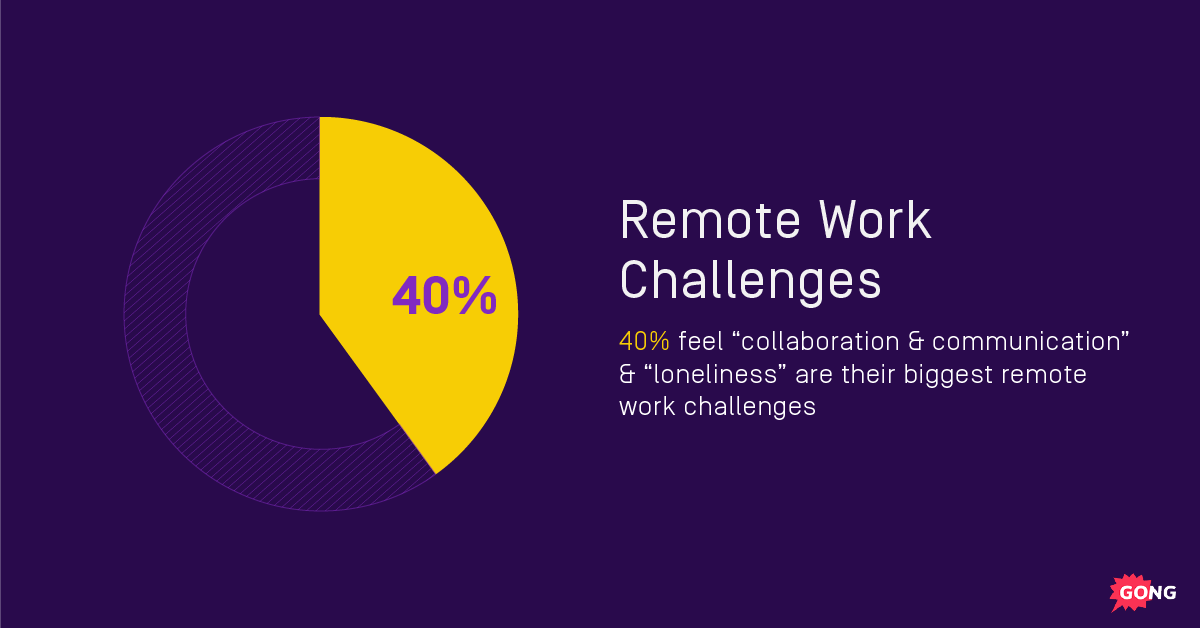Dannie Herzberg: Advice for Evolving With Our New
How do you build a great company culture?
Is it possible to develop better customer rapport over video and phone meetings?
What three metrics matter most to a rep’s success?
On a recent episode of the Reveal podcast, we connected with Dannie Herzberg, senior director of Sales at Slack, for answers to these and other questions that are top of mind for revenue leaders.
Key Points to Remember
- Your culture needs to evolve with your business.
- Investing in your hiring process is key to building a great culture.
- Showing your real environment at home during video sales calls helps create a personal connection with customers.
- You need to trust your managers and reps to over-prepare for sales calls.
- The three core things that will make someone a successful rep are attitude, input, and outputs.
Building Slack
I got to join Slack at a really lucky time. Frankly, it was much bigger than any other company I was considering upon graduating school. And I was still very intrigued by it because product market fit had been completely nailed. Customer love for Slack is through the roof. But go-to-market was within its very earliest stage.
Company-wide, the org was close to 800 employees when I joined. But I’ll give you a sense of what sales looked like. So Bob and Kevin had joined a couple of months before I joined. We had introduced segmentation for the first time. Salesforce.com is the system of record for the first time. Specialization of roles between account execs and solutions engineers and customer success for the very first time. And territory quotas, etc.
So it had just transitioned from hiring a bunch of account reps who were basically really smart, passionate utility players who could answer any sort of customer question, to starting to specialize in our roles. There were no playbooks built, and we were in the very early days of just getting it off the ground.
I think it’s really helpful to start learning where you thrive. What makes you happy? In an ideal world, what makes you energized—that isn’t the obvious path for everyone else?
An Evolving Culture
I really like the concept of thinking through how the culture should evolve, rather than how to maintain a culture. Because we never want to bottle up a culture in its entirety and hold on to the glory days of being a startup.
So evolution is exactly what we’re aiming for. I think that there are a number of things that we at Slack have done uniquely well and that I would encourage other leaders to embrace. The first part of building a culture that you’re proud of is investing deeply in the hiring process. And actually having a true process behind it that is repeatable, that is regimented, that designs against bias, and allows us to sample test as much as possible for the things that will be important within the role.
We have quite a thorough and structured process for getting to know our candidates. And by the end of it, I really feel like I have a good sense of whether someone would be a really good addition to our team’s culture. And whether they are set up for success in the role.
That’s part one. Part two is driving and articulating really clear values across the organization. And I think this can be done company-wide, of course. We have core attributes that we care about at Slack, and a set of values. But I also think it can be done specifically at the org level.
My org’s leadership team and I spent a lot of time thinking about who we are and how we operate. And we try to distill that down into two core values that drive the way that we behave internally within meetings, and externally with customers. We share that with the team. We invite feedback and input, and then that’s what we publicly reinforce. I think that’s basically how you build a culture that you’re proud of.
Building a Bond with Customers
What [relying exclusively on Zoom] has meant for us is figuring out a way to build customer empathy virtually. Because that’s really what you’re working on when you go into the office. It’s a combination of being able to literally stand in their shoes, see what their surroundings look like, and get a sense for the company culture and the vibe in the office. And therefore be able to better visualize if and how you can help.
And there’s also an element of rapport that’s harder to recreate virtually. So what I have encouraged and what I’ve seen work well for folks is really just leaning into the mess that we’re all in, and leaning into the vulnerability to facilitate a more meaningful bond with our customers and our prospects.
When it comes to Zoom, I’ve seen some folks use virtual backgrounds of the company that they’re talking to, so you can virtually put yourself in their shoes. It’s a way to show that you’ve done your research and you’re right there with them. I think that’s great.
In the absence of something like that, I would encourage people to actually keep their background off. Don’t have that Golden Gate Bridge background hiding the fact that your husband and eight-month-old are running around the house behind you and living life—busy trying to juggle everything. I would let that show and invite your customers to have their babies on the call, and talk about life and what the shift has felt like. And also talk shop, because they’re all interconnected. It’s the reality we’re all living in.
It’s an excuse to get real faster, and develop a relationship and a level of intimacy faster. Just because you were on a phone call or you’re on Zoom with video, doesn’t mean that you should skip over rapport and cut to the chase. I think that is an assumption or a belief that people should throw away. I would encourage people to continue booking hour-long meetings as though you would if you were coming in for an in-person, and lean into the unscripted parts of the call as much as you can, and trust that that’s going to serve you well in figuring out how to help customers.
Data Breakout—Remote Work Challenges
Let’s look at the data around communication for people working from home.
According to Buffer’s annual State of Remote Work Report 2020, the two biggest challenges for remote work are a near tie between “collaboration and communication” and “loneliness.” They account for around 40% of total responses.
And these have been the top challenges for the past three years. So now that nearly everyone in the B2B space is remote, this challenge will only increase.

Be Prepared
As a leader, you really need to trust your managers and your reps to over-prepare. So that’s really what we’ve been doing. Having meetings before customer meetings, anticipate what questions are going to come up, what objections we might face, what uniquely may be hurting our customer in their industry given everything that’s going on.
And role playing—essentially like you’re selling a tool that’s perfect for this—role play to see how you would anticipate and address that kind of a question. Either through a customer story or through a follow-up question to dig a little bit deeper. And that’s what will set you up.
I don’t think there’s anything different about this time in terms of the need for leadership involvement in customer meetings. If you should be in the room, you’ll be in there virtually. If not, then you just need to help the field practice and get really comfortable, and then let them do their thing.
And to a certain extent, rely on dashboards to understand where conversion rates are breaking down. If someone had 10 hour-long Zoom meetings with leaders at their prospects’ companies over the course of a week, and none of those turned into pipeline generated, that warrants a conversation to figure out how they’re managing those meetings and what’s happening.
But aside from that, I don’t think there’s all that much that really needs to change.
Attitude, Inputs, and Outputs
I measure the same things regardless of whether we’re in the same office, or whether we are remote. The three core things that will make someone successful in this [rep] role are: attitude, number one; inputs, number two; and outputs, number three. And I feel like all of those, they’re really easy to get a sense of even today.
So attitude is, are you the one rallying a team—especially when times are hard—and making it that much more fun to be a seller at Slack and an employee at Slack? Do you face adversity with some sort of resilience? Do you take feedback really well and actually seek it out? To me, nothing is a greater predictor of a sales rep’s or leader’s success than their attitude that they come in with.
And then inputs are pretty clear to track through all sorts of other mechanisms. So that’s basically—how many times is someone picking up the phone and calling their customers, what’s the quantity and quality of their emails, how many of those tend to get responses? That’s really important. And luckily, our tooling allows us to measure all of that and work on it.
And then the last part is outputs, which is basically how much revenue have you produced? But that clearly comes as a result of attitude, and quality and quantity of input.
I think listening is a skill that I’m constantly trying to practice and is really hard. The best people in sales, and the best leaders and management, I think do it really well.
Subscribe to Reveal: The Revenue Intelligence Podcast
Every week, we interview senior revenue professionals who share their insights on how they leverage revenue intelligence to drive success and win their market.
You’ll hear how modern go-to-market teams win, close revenue with critical deal insight, and execute their strategic initiatives—plus all the challenges that come along with it.
Listen now at gong.io/podcasts.
